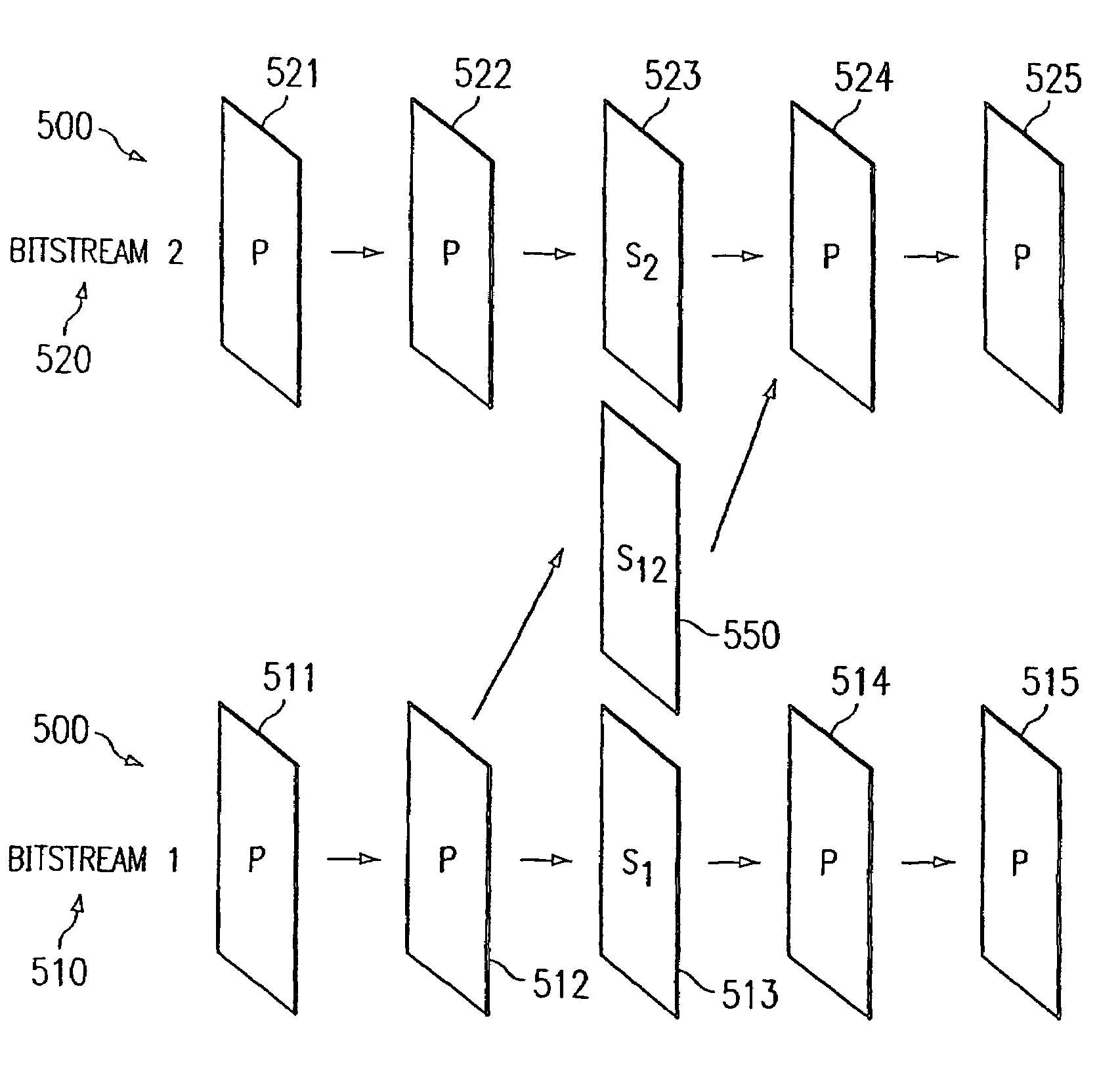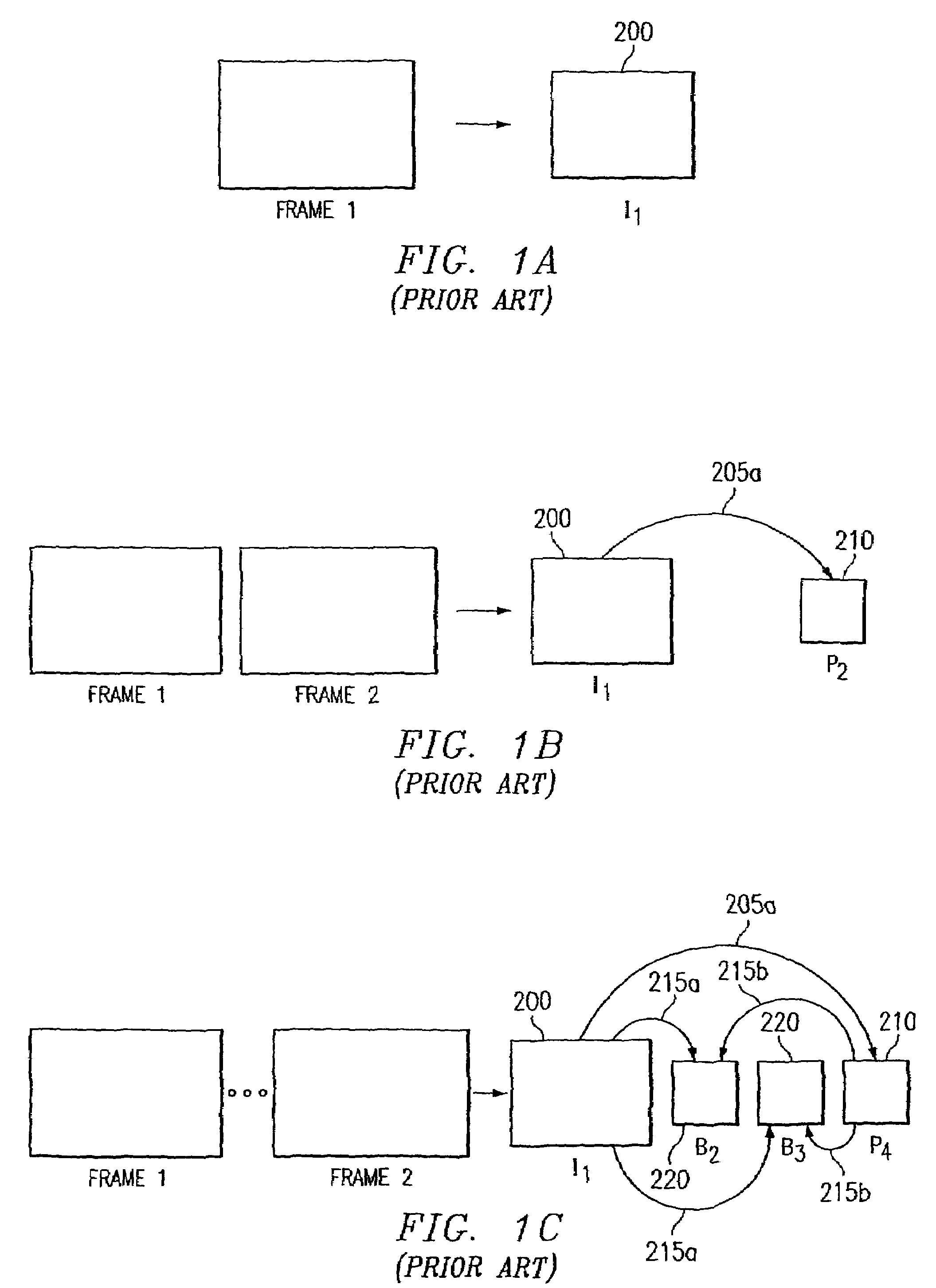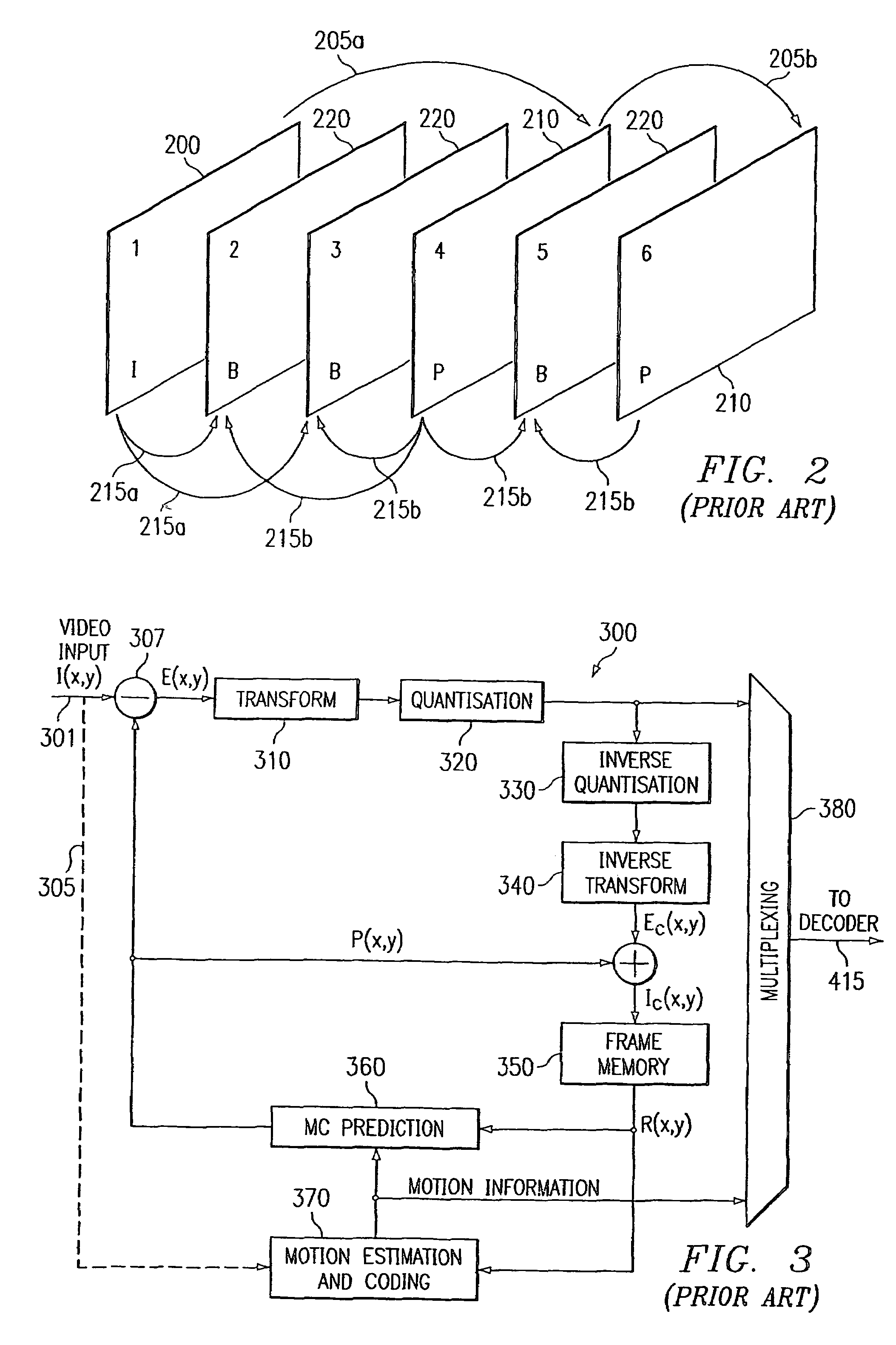Switching between bit-streams in video transmission
- Summary
- Abstract
- Description
- Claims
- Application Information
AI Technical Summary
Benefits of technology
Problems solved by technology
Method used
Image
Examples
first embodiment
[0056]The encoding of S-frames according to the invention will be described with reference to FIG. 11 which is a block diagram of an S-frame encoder 1100 according to the invention.
[0057]A video frame to be encoded in S-frame format is first partitioned into blocks and each block is then encoded as either an SP-block, an SI-block, or an intra-block, an intra-block being known as such from prior art. Switch 1190 is operated as appropriate to switch between the SI and SP encoding modes, i.e., the switch 1190 is a construction used in the description of the invention, not necessarily a physical device. In SP-encoding mode switch 1190 is operated to obtain a motion compensated prediction for the current block 1170. Motion compensated prediction block 1170 forms a prediction P(x,y) for the current block of the frame being encoded in a manner analogous to that used in motion compensated prediction known from prior art. More specifically, motion compensated prediction block 1170 forms the ...
second embodiment
[0083]According to the invention a video frame to be encoded in S-frame format is first partitioned into blocks and each block is then encoded as either on SP-block or on SI-block. Switch 1585 is operated as appropriate to switch between the SP and SI coding modes. In SP coding mode switch 1585 is operated to obtain a motion compensated prediction for the current block of the frame being encoded from motion compensated prediction block 1575. Motion compensated prediction block 1575 forms a block of predicted pixel values P(x,y) for the current block of the frame being encoded by determining a motion vector describing the relationship between the pixels of the current block and pixel values of a reconstructed reference frame held in frame memory 1570.
[0084]In SI-coding, mode switch 1585 is operated to obtain a prediction for the current block of the frame being encoded from intra prediction block 1580. Intra prediction block 1580 operates in a manner analogous to that described in co...
third embodiment
[0097]In FIG. 16, an encoder according to the invention is shown. In this embodiment, the transform coefficients cpred undergo quantisation and inverse quantisation using the same quantisation parameter SPQP both in the encoder section (blocks 1625 and 1630) and in the decoder section (blocks 1692 and 1694). Therefore, the encoder does not introduce any additional quantisation error to the prediction loop, and error build-up in the prediction loop is thus effectively prevented. The blocks 1610, 1620, 1625, 1630, 1635, 1640, 1650, 1660, 1665, 1670, 1675, 1680, 1685, 1690 have similar functionality to the blocks 1510, 1520, 1525, 1530, 1535, 1540, 1550, 1560, 1565, 1570, 1575, 1580, 1585, 1590 presented in FIG. 15, respectively.
[0098]In FIG. 6, a decoder 600 according to an advantageous embodiment of the invention is described. Most of the elements of the decoder 600 are the same than of the decoder 1200 presented in FIG. 12. The operational blocks of the decoder 600 are arranged to d...
PUM
 Login to View More
Login to View More Abstract
Description
Claims
Application Information
 Login to View More
Login to View More - R&D
- Intellectual Property
- Life Sciences
- Materials
- Tech Scout
- Unparalleled Data Quality
- Higher Quality Content
- 60% Fewer Hallucinations
Browse by: Latest US Patents, China's latest patents, Technical Efficacy Thesaurus, Application Domain, Technology Topic, Popular Technical Reports.
© 2025 PatSnap. All rights reserved.Legal|Privacy policy|Modern Slavery Act Transparency Statement|Sitemap|About US| Contact US: help@patsnap.com



